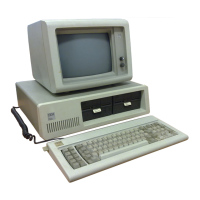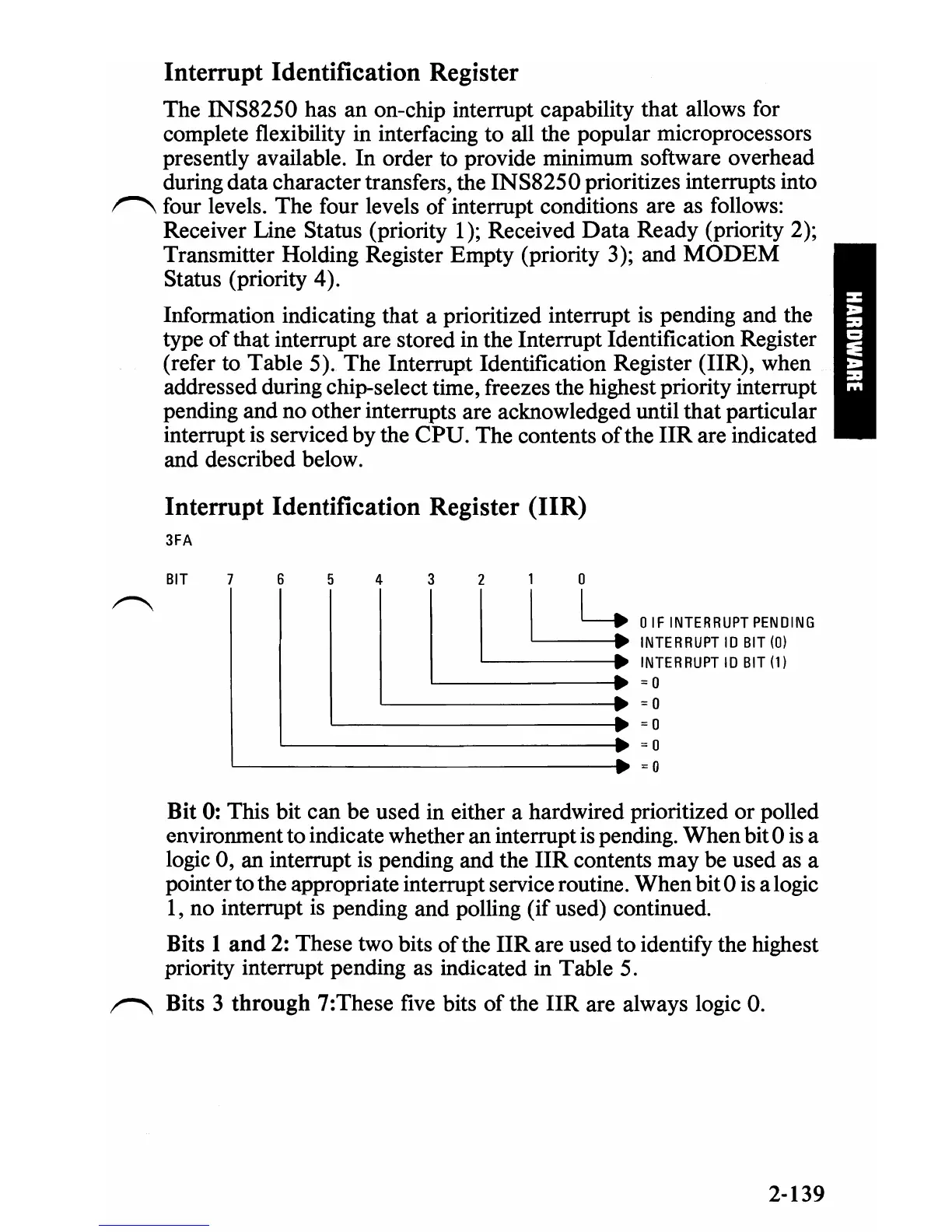Interrupt Identification Register
The
INS8250
has an on-chip interrupt capability that allows for
complete flexibility in interfacing to all the popular microprocessors
presently available. In order to provide minimum software overhead
during data character transfers, the
INS8250
prioritizes interrupts into
r"\
four levels. The four levels
of
interrupt conditions are as follows:
Receiver Line Status (priority 1); Received
Data
Ready (priority 2);
Transmitter Holding Register Empty (priority 3); and
MODEM
Status (priority 4).
Information indicating that a prioritized interrupt
is
pending and the
type
of
that interrupt are stored in the Interrupt Identification Register
(refer to Table 5). The Interrupt Identification Register (IIR), when
addressed during chip-select time, freezes the highest priority interrupt
pending and no other interrupts are acknowledged until that particular
interrupt
is
serviced by the CPU. The contents
of
the
IIR
are indicated
and described below.
Interrupt Identification Register (IIR)
3FA
BIT
6
5 4 3 2 1 0
I
L:
0
If
INTERRUPTPENDING
I
I
~~
INTERRUPT
10
BIT
(0)
INTER
RUPT
10
BIT (1)
I
-
'--------~
~
0
'-----------
....
~
0
'-------------~
~O
L-
____________
~
~O
'-----------------
....
~O
Bit 0: This bit can be used in either a hardwired prioritized or polled
environment to indicate whether an interrupt is pending. When bit 0
is
a
logic 0, an interrupt is pending and the
IIR
contents may be used as a
pointer to the appropriate interrupt service routine. When bit 0
is
a logic
1,
no interrupt
is
pending and polling (if used) continued.
Bits 1
and
2: These two bits
ofthe
IIR
are used to identify the highest
priority interrupt pending as indicated in Table 5.
,.,-....,
Bits 3
through
7:These five bits
of
the
IIR
are always logic
O.
2-139

